More snow fell this past weekend, and I began to despair that Spring would ever come. But then this photo of Winter Aconite and Snowdrops spreading across the forest floor just one year ago showed up as a Facebook Memory. Oh gosh, could these super-early-bloomers be up already? All they need is a bit of bare earth to burst into bloom. So I hurried out to Orra Phelps Nature Preserve in Wilton on Tuesday, with hopes held high. Yes, yes, I know that neither of these plants in a native wildflower, but that doesn't mean I wouldn't be delighted to see their lovely flowers, remnants of a garden abandoned long ago.
Nope. Not yet. Snow still lay deep in the old walled garden where I found those early bloomers on this date a year ago. Too deep for any flowers to show their faces yet.
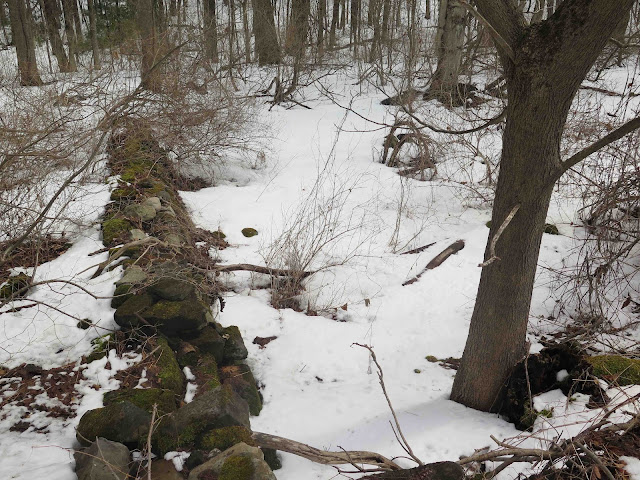
Snow lay deep throughout the woods of this small preserve, although its little creek was splashing and dancing as if it were celebrating Spring.
And a whole hillside that's watered by springs was free of snow and studded with the bulbous spathes of our earliest blooming native wildflower, Skunk Cabbage (Simplocarpus foetidus). I could see many purple plants protruding from the mud. Would any of them actually be in bloom?
Venturing carefully across boot-sucking mud, I found that most of the spathes, while brightly colored, were still tightly closed, still guarding the not-yet-blooming spadices within, not yet wafting the scent this flower is famous for on the spring air to invite early pollinators in.
But look! Here was a burgeoning cluster of Skunk Cabbage spathes, and one of them was wide open.
I could see the individual florets studding the spadix. They were not yet shedding pollen, but they sure looked as if they were ready to. Close enough! I found the first flower of Spring!
I was pleased to find evidence of other flowers that will bloom much later in spring. A large Rosebay Rhododendron (Rhododendron maximum) was leaning over the creek, holding many fat flower buds, as well as the remnants of last year's beautiful blooms.
I found many fungi adding their color and interest to this late-winter woods, including these masses of ruffly persistent mushrooms, their golden caps tinged green from the algae that shared their fallen log.
This fallen limb was rendered quite lovely by golden fungi and verdigris-colored lichens, a wonderful combination of colors and textures.
And here was a whole row of that same golden fungus, a ruffly, striped sea-shell-shaped one that I recognized as the Crimped Gill Fungus (
Plicaturopsis crispa).
When I turned this little cluster of them over, there were the crinkly, wrinkly gills that are diagnostic for the Crimped Gill Fungus. One of the remarkable things about this common fall-fruiting fungus is that it is also a truly functional winter fungus. Even after it has become thoroughly dried or solidly frozen, it can be brought indoors, moistened and kept in a humid container, and it will produce many spores throughout the winter. It is also really cute!
At first glance, I thought I was seeing a whole tree-trunk decorated by Turkey Tail Fungus, a shelf fungus known for its alternating zonal stripes of tan and orange. But I was wrong!
The undersides of these mushrooms were definitely gilled, not like the smooth white surface consisting of tiny pores that is diagnostic for the real Turkey Tail (
Trametes versicolor). I am going to guess that this mushroom is instead
Lenzites betulina, which is known to closely resemble the Turkey Tail, except for possessing a gilled fertile surface. In fact, the vernacular name for this fungus is Gilled Polypore (an oxymoronic name if there ever was one!)
While looking up information about this "Gilled Polypore," I discovered that it has been re-named. It is no longer called "Lenzites betulina," but has been moved to the same genus as Turkey Tail and re-named "Trametes betulina."
As I made my way out of the Orra Phelps Nature Preserve, I lingered by the stream (the Little Snook Kill) to enjoy the lovely sound of its water as it tumbled over rocks in a series of mini waterfalls.
Those mini-waterfalls along the Little Snook Kill at Orra Phelps inspired me to stop by the much larger Snook Kill Waterfall that roars down a steep hillside off of Strakos Road, a short detour from my normal route home along Parkhurst Road. Recent rains and melting snow have filled this stream to its brim, creating a thundering watercourse that was worth a precarious venture down a very steep bank to observe. Recent and persistent freezing temperatures, though, have covered much of the falls with frozen froth, so much of the actual water was hidden from view. But I could certainly hear its roar beneath that frozen cap.
And the view of this waterfall was still quite dramatic.
UPDATE, 3/19/22: A few warm rainy days later, this same waterfall has shed much of its ice:



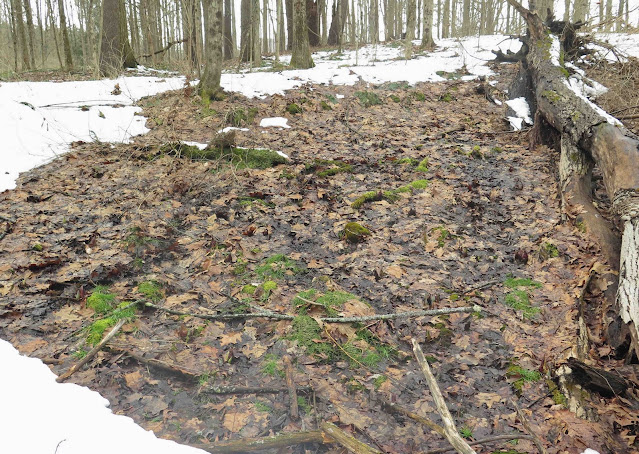


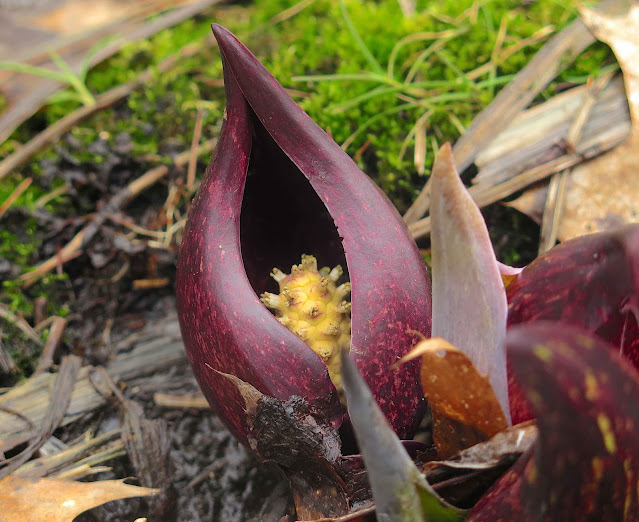



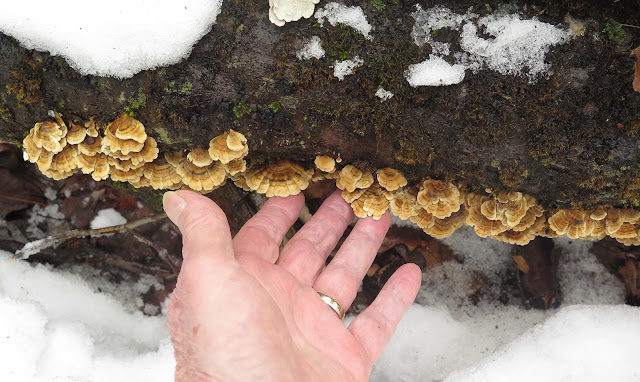
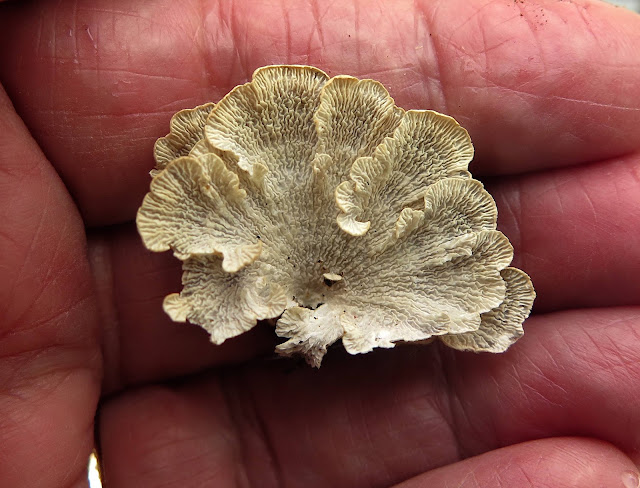
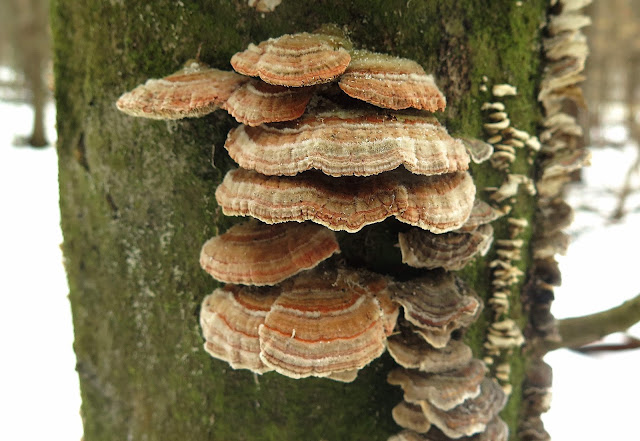





4 comments:
Beautiful! I love skunk cabbage's colors, and its interesting form. Thanks!
Those first spring flowers are so special.
Spring really made us wait for it this year! First woodcock here this morning though. They renamed all the rana frogs a couple of years ago, leaving me challenged to remember their new names. ugh.
Spring's arrived down here: peepers and wood frog calling and laying eggs, turtles basking on fallen trees and many species of waterfowl passing through, silver maple blooming.
Post a Comment